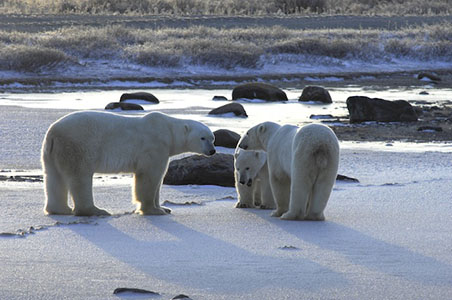Researchers, colleagues and collaborators of the Derocher lab at the University of Alberta have been monitoring the Western Hudson Bay polar bear population for the past 30 years. Working long-term in the same region provides a unique opportunity to assess bear health, behaviour and physical condition on a large temporal scale while providing important insight into how the health of the population is changing over time. Western Hudson Bay is one of the most threatened polar bear populations as it lies near the southern limit of their range. Declining sea ice in Hudson Bay is forcing the bears onto land for longer each year and cutting into their critical hunting period in April, May and June. During the fasting summer months on land, polar bears grow new fur and incorporate cortisol, a blood borne stress hormone, into the hair shaft. New research has started examining cortisol levels preserved in animal fur as an indicator of hypothalamic-pituitary adrenal system activation; or put generally, animal stress. My project will analyze cortisol concentration in hair samples collected from Western Hudson Bay in the fall of each of the past 10 years (2004 – 2013) as a proxy for stress. Understanding how the stress burden on individual bears is changing over time has important implications for the health of the entire population. Chronic stress can have many deleterious effects on animals including diminished growth, reduced reproduction, and immunosuppression. The greater the proportion of pathologically stressed individuals in a population the more these symptoms will influence overall population health, growth and future outlook.
We hypothesize that summer stress will be largely influenced by:
a) The body condition of the bears at the time of ice breakup
– Appropriate fat reserves (built up in the spring) are essential to last the summer fasting months on land without access to high caloric food items.
b) The duration of seasonal ice coverage
– Progressively later ice freeze-up and earlier ice break-up lead to a reduced duration of ice coverage, which means longer periods of fasting with less access to essential prey.
c) The sex, reproductive status and age of the individual.

Our study aims to investigate the relative influence of each of these variables on the cortisol levels of individuals and identify significant correlations. Understanding important physiological responses to a changing climate can help guide important decisions in the management of threatened populations.